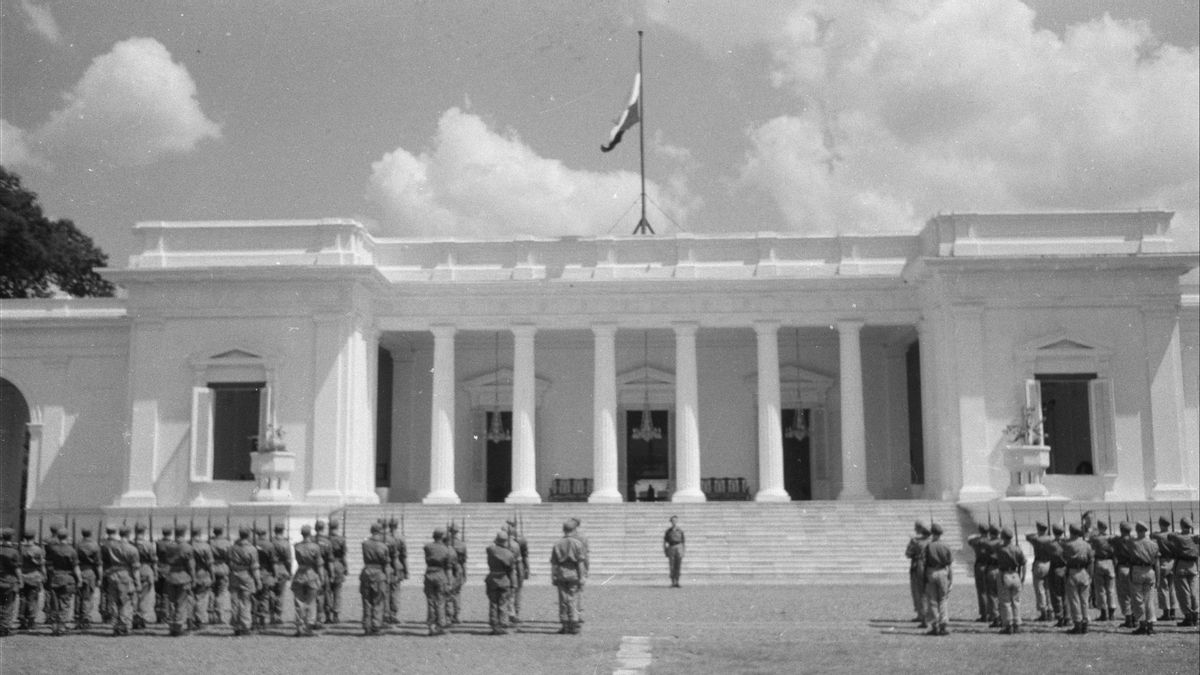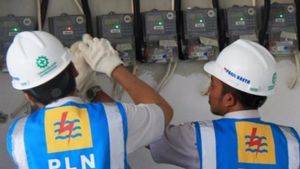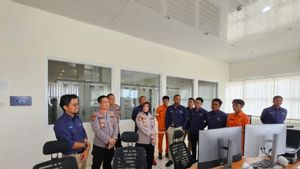JAKARTA - When Indonesia became independent, the Dutch did not rush to recognize the sovereignty of their former colony. The country only recognized Indonesia's independence almost five years later, namely on December 27, 1949.
The ceremony for the transfer of Indonesian sovereignty by the Dutch as written by Kukuh Pamuji in Mengelisik at the Jakarta Presidential Palace Museum (2020) was held in two places: Gambir Palace, Jakarta and the Dam Palace, Amsterdam. At that moment, the Red-White-Blue flag for the last time crept down from the palace building in its former colony.
The lowering of the flag was greeted by cheers from the native people. The atmosphere became even more lively when the national anthem of Indonesia Raya played along with the rise of Sang Saka Merah Putih.
"Freedom! Freedom! Long live Indonesia!" they said.
The shriek of the word "independence" was what moved the First President of Indonesia, Sukarno, to change the name of the Gambir Palace to the Merdeka Palace. The day after the transfer of sovereignty, Bung Karno made the Merdeka Palace his residence when he was number one in Indonesia.
Meanwhile, at the Dam Palace Troonzaal (Throne Ward), Amsterdam, Queen Juliana also signed the text of acknowledging her sovereignty. Raju Juliana then submitted the manuscript to the Prime Minister of the Republic of Indonesia, Mohammad Hatta, who led the delegation of the Republic of Indonesia in the negotiations.

Adjacent to the State Palace
The location of the Merdeka Palace is only a stone's throw from the State Palace. There is a long history of why the two residences of this country's leader were built close together.
The State Palace was originally designed as a Rindang Villa. Meanwhile, the Merdeka Palace was deliberately built to be the residence of the Governor-General of the Dutch East Indies, who were nicknamed Koningsplein Paleis or Palace of the High Representative of the Dutch Crown.
Pembangungan Koningsplein Paleis - another name for the Merdeka Palace - is none other than because the Rijswijk Palace - the State Palace - does not fulfill the requirements as the residence of the Governor General, as we have previously reviewed . As a result, the Koningsplein Paleis was built by Governor General James Loudon in 1873 and inaugurated by his successor Johan Willem van Landsbarge in honor of the marriage of King Willem III in 1879.
"The Merdeka Palace or Koningsplein Paleis, which was built in 1873, is actually younger than the State Palace which was built in 1796, is located in the same area but the face faces Veteran Street," wrote Alwi Shahab in Betawi: Queen of The East (2002).
When it was built by the Dutch, the Merdeka Palace was actually relatively simple when compared to the Tokyo Palace, Bangkok, or several palaces in India. The reason was that at that time the colonial government was saving on the budget, because of the war in the archipelago. The budget that was spent to build the Merdeka Palace was only 289,250 guilders.
Interestingly, the building which was built with an area of 2,600 square meters was designed based on the idea of Ir. Couvee Djen and realized by Ir. HM Debbete as the architect. Quoted from Adolf Heuken SJ in Medan Merdeka: The Heart of the Capital City of Indonesia (2008), the development was carried out by Firm JB Drossares.
In short, the Koningsplein Paleis was then built in a tropical neo-classical style with a thin mass and a large roof. “The main building is flanked by two wings with arched gates that reinforce the impression of lawiness. The shape of the windows with pediment and louvre lightens the appearance of the face. "

Although it was not budgeted too much, in appearance Koningsplein Paleis seemed to wow the citizens of Batavia. Because it is difficult to pronounce the Koningsplein Paleis by local residents, many of them call this building the Gambir Palace, referring to the number of gambier trees in the area.
The outer appearance of the Palace also looks elegant through the wide porch with six round pillars of Doria's barrel at the front of the palace. The floor surface was also seen to be raised two meters high in an effort to overcome humidity.
"Thus the grandeur, which is supported by the sixteen steps of white marble that stretches out in front of the palace porch, increases," said an important figure in the writing of Jakarta history, SJ Adolf Heuken.
The Merdeka Palace building is currently divided into several rooms. Among others, the front foyer, credentials room, banquet room, reception room, heirloom flag room & Proclamation Text, Study Room, Bedroom, Family Room: Rest Room, and Kitchen. The palace overlooks Bufelsloo (National Monument Square) square.
Carrying up to now, a total of 20 people have inhabited the Palace. Among other things, 15 governors-general of the Dutch East Indies, three Saiko Syikikan (Supreme Commander of the Japanese XVI Army in Java), and three Indonesian presidents. The President of the Republic of Indonesia who actually stayed was Soekarno, Abdurrahman Wahid, and Joko Widodo before residing at the Bogor Palace.
The English, Chinese, Japanese, Arabic, and French versions are automatically generated by the AI. So there may still be inaccuracies in translating, please always see Indonesian as our main language. (system supported by DigitalSiber.id)












